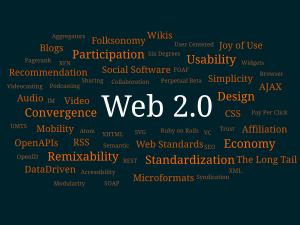 Image via WikipediaAs I reflect over the past three years of my personal and professional life and how the Web 2.0 / Social Networking / Social Media world has profoundly impacted the way I communicate and interact with friends, colleagues, co-workers, family and those of like I interest; I ask myself "How did I manage without these tools in the past?"
Image via WikipediaAs I reflect over the past three years of my personal and professional life and how the Web 2.0 / Social Networking / Social Media world has profoundly impacted the way I communicate and interact with friends, colleagues, co-workers, family and those of like I interest; I ask myself "How did I manage without these tools in the past?"I daily utilize Twitter, Facebook and LinkedIn to communicate with friends, family and fellow educational technology enthusiasts. My iPad, iPhone and Tablet PC are always within an arms' reach. I have learned the 'fit for purpose' with these devices and their associated applications and software. Upon arriving at home, my web enabled TV allows me to stream YouTube videos, view Twitter and Facebook updates, check out the newest video on Netflix and read the daily news. (Oh yeah and I watch TV on it too.) More and more, every device and web-based application I utilize is designed to keep me connected and communicate with others as quickly and instantaneously as possible.
When we apply this logic to world of education, specially K-12, why wouldn't we want to utilize the same model to engage our students? By providing them the tools and applications that enhance their ability to connect, collaborate and communicate, we are molding and shaping the next generation of global leaders.
I am always seeking the next latest and greatest app or device to enhance my communication, connectivity and collaboration. I consider myself to stay on the cutting edge and love to learn from the many educational technology experts across the world who enjoy sharing as much as I do. I challenge others to take up the same approach. Share with others. Share your knowledge, share your research, share your articles and share your ideas. By sharing and learning, we can continue to grow and ultimately improve the way we learn, teach, communicate and collaborate with one another. These skills are a necessity if we as a country wish to stay at the forefront of the digital global economy that is already upon us.
JDS





